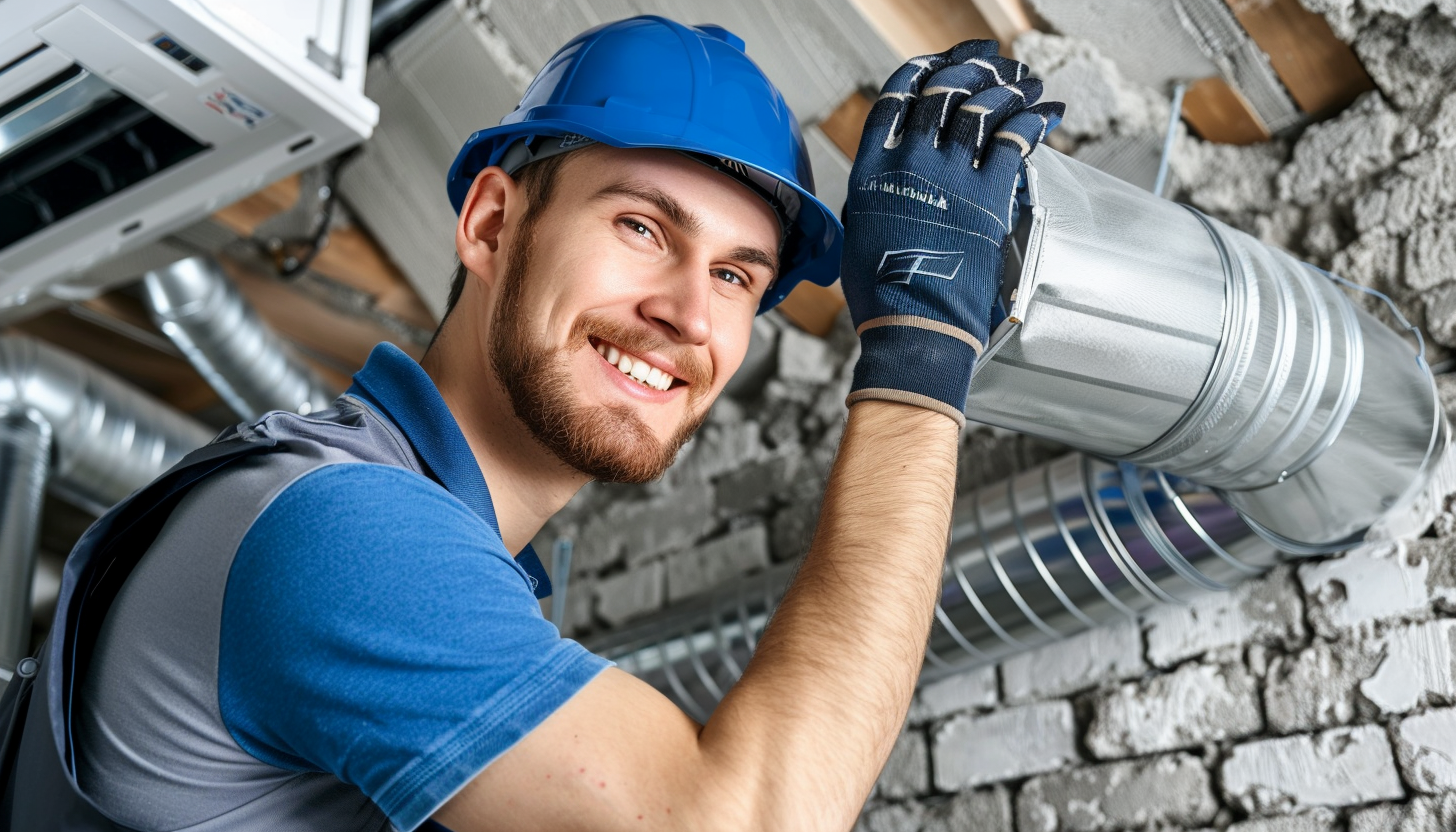
Replacing the air ducts in your home is an essential step toward improving your living environment. Understanding when and why you need a home air duct replacement can save you from discomfort, health issues, and higher energy bills. In this comprehensive guide, we’ll delve into the signs, process, benefits, and frequently asked questions about home air duct replacement. For optimal home comfort, consider
-
Recognizing the Need for Home Air Duct Replacement
Key Indicators of Aging Ductwork
- Age: If your air ducts are over 15 years old, it might be time for a replacement.
- Damage: Visible dents, holes, or separated joints.
- Noises: Rattling or whistling sounds indicating loose or damaged ducts.
- Inconsistent Airflow: Uneven temperatures across different rooms.
- Higher Bills: Unexplained increases in energy bills.
Diagnosing Ductwork Issues
Recognizing issues early can save costs and improve efficiency. Here are common problems and solutions:
- Inconsistent Airflow: Caused by leaks or blockages. Solution: Sealing or replacement.
- Noisy Operation: Loose sections. Solution: Tightening or insulating.
- High Energy Bills: Age-related inefficiency. Solution: Evaluation and possible replacement.
- Poor Air Quality: Dust and mold in ducts. Solution: Cleaning or replacing contaminated sections.
The Comprehensive Process of Home Air Duct Replacement
Step-by-Step Overview
- Assessment: Professional evaluation of current ductwork.
- Design: Custom layout for efficient air distribution.
- Removal: Careful dismantling of old ducts.
- Installation: Using high-quality materials tailored to your home.
- Testing: Ensuring the system is sealed and operational.
Key Considerations for Home Air Duct Replacement
- Materials: Flexible ducts, fiberglass-lined ducts, or sheet metal.
- Energy Efficiency: Modern designs save on energy bills.
- Professional Installation: Guarantees minimal disruption and optimal performance.
Embrace the Benefits of Home Air Duct Replacement
Enhanced Indoor Air Quality
New ductwork minimizes the circulation of dust, allergens, and mold, ensuring cleaner, healthier air. It’s essential to maintain
-
for better efficiency.
Increased Energy Efficiency
Modern air ducts reduce energy loss, resulting in lower utility bills and a smaller carbon footprint.
Improved Comfort
New ductwork ensures balanced air distribution, eliminating hot or cold spots and enhancing overall comfort.
Long-Term Savings
Reduced energy bills, fewer repairs, and extended HVAC system lifespan contribute to significant savings over time.
Peace of Mind
Knowing your air ducts are in top condition provides comfort and security, with cleaner air and consistent temperatures.
Leveraging Technology for Efficient Home Air Duct Replacement
Smart Thermostats
These devices learn your habits and adjust the heating and cooling systems accordingly, enhancing comfort and saving energy.
HVAC Zoning Systems
Divide your home into zones for independent heating and cooling, ensuring precise air delivery where needed. Experts recommend
-
to improve air quality.
Regular Maintenance Tips
- Inspect Filters: clean or replace regularly to ensure better airflow and quality.
- Annual Inspections: Professional checks to catch and address minor issues.
- Clear Vents: Keep furniture or drapes away from vents for free air circulation.
FAQs About Home Air Duct Replacement
Q1: How often should home air ducts be replaced?
A1: Typically, ductwork lasts 10-20 years. Regular inspections can help determine the exact timing for a home air duct replacement.
Q2: Can I replace my home air ducts myself?
A2: It’s recommended to use a professional HVAC service due to the complexity and need for proper sealing and installation.
Q3: How can I maintain my new air ducts to prolong their lifespan?
A3: Regular cleaning, prompt repairs, and annual HVAC inspections are key to maintaining ductwork condition.
Q4: Will new air ducts improve my home’s air quality?
A4: Yes, new ducts can significantly reduce dust, allergens, and pollutants, improving overall air quality.
Q5: What materials are best for home air duct replacement?
A5: Flexible ducts, fiberglass-lined ducts, and sheet metal each have benefits. A professional can recommend the best option for your home.
Making the Decision: Repair or Replace
Cost-Effectiveness
Long-term, replacing aging or inefficient ductwork might be more cost-effective than frequent repairs.
Energy Efficiency
New ductwork, especially when combined with smart technology, can significantly reduce your energy bills.
Renovation Plans
If planning major renovations, it’s an ideal time to replace your ductwork to better suit the new layout of your home.
Taking Action: Starting Your Home Air Duct Replacement
- research: Look into the latest materials and technologies.
- Consult Professionals: Get assessments and quotes from reputable HVAC contractors.
- Plan Ahead: Consider how future changes to your home might affect your HVAC needs.
Conclusion: Refreshing Your Home with New Air Ducts
Replacing your home air ducts is a significant investment that improves comfort, health, and efficiency. By recognizing the signs, understanding the benefits, and taking informed steps, you can ensure your home remains a sanctuary of comfort and health. Professional HVAC technicians can provide invaluable Advice, service, and peace of mind. Upgrading your system involves - for best results.